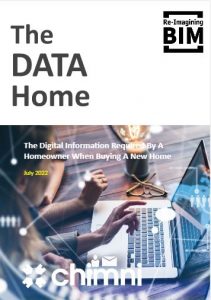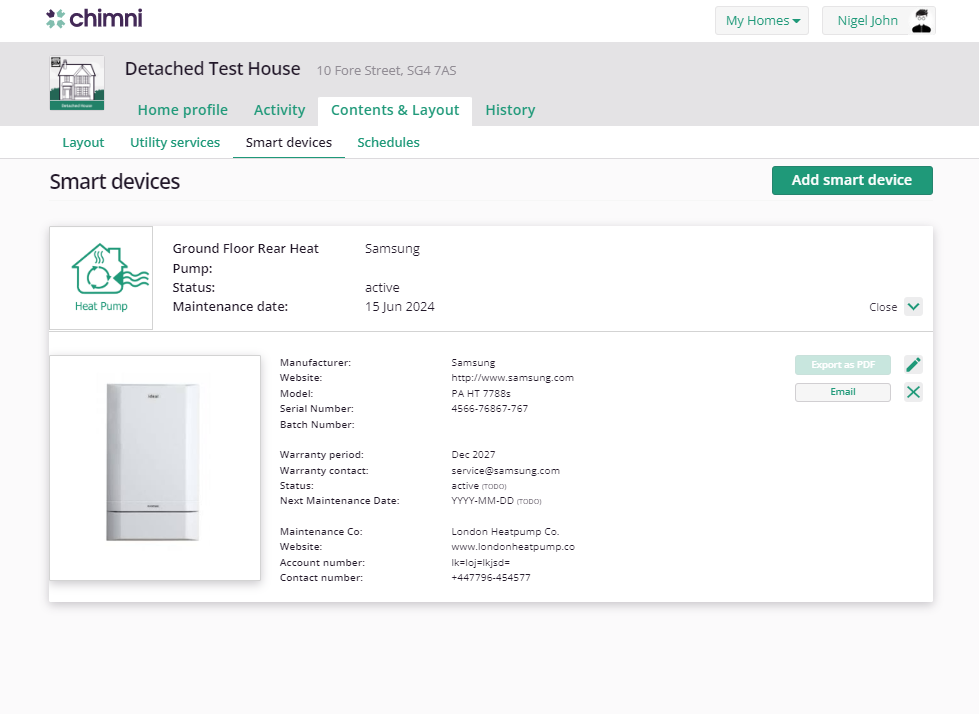A first-ever “consumer data specification” for new homes sets a benchmark for driving BIM innovation in housebuilding, explains Nigel Walley, managing director at Chimni
The consumer data specification, outlined in a new white paper, The Data Home, is the product of an Innovate UK-funded research project called Re-Imagining BIM led by property logbook company Chimni and openBIM specialist xbim.
Launched over concerns about the low take-up of BIM in the housebuilding industry, the project set out to investigate how data flows between developers and homeowners, and to look at how BIM data could be used to create new intelligent services for homeowners.
A benchmark for digital delivery in the housebuilding industry
The project encompassed behavioural research with homeowners, as well as a technical trial with xbim. The intention was to set an “aggressive” benchmark for digital delivery in the housebuilding industry.
Nigel Walley, managing director of Chimni, said: “We know that homebuilders recognise that data and digital tools are now part of their core product – our homes are becoming complex systems. But the extent of data and intelligence handed over to buyers varies widely across the industry. Crucially, it doesn’t meet expectations which are increasingly being set by the workplace or industries like automotive.”
The current practice of handing over PDFs of key documents like warrantees and user manuals is only a transition phase as we move from the old paper handover packs. House buyers are ahead of the industry in their expectations about a truly digitised information market where they can access open, structured data via apps and digital services.
“Expectations are being set by the motor industry. If you buy a high-end electric car, you get an app and a web account; everything is delivered online. This has kicked off a wave of service innovation from companies supporting the industry,” said Walley.

“Homes are much more complex but we need to aspire to the same digital innovation that cars and financial services are experiencing. The new data standard we’ve produced creates a high bar for homebuilders to measure themselves against.”
Repurposing data held in BIM models
The data specification that was created as part of the Re-Imagining BIM project initially looked initially at repurposing data held in BIM models and linking it to homeowner-friendly apps like Chimni.
The project proved the technical viability of linking BIM models to consumer apps via systems like the xbim OpenBIM servers. However, the behavioural research component of the project went much further.
“We flipped the process and started with the way homeowners expected to manage their home life and worked backwards. We addressed the question of ‘what data could and should be delivered to homeowners’, and what kinds of services they may expect with it,” said Walley.
The project produced a range of homeowner scenarios that imagined homeowner tasks or problems and identified what data they might want to resolve it. The scenarios, which are outlined in the white paper, enabled the project team to identify what formats the homeowners expected and how they wanted to access it.
“A great example is maintenance schedules for complex stuff like central heating,” said Walley.

“In the research, the consumers told us they didn’t want user manuals. They asked why they can’t just have an Outlook file with all key dates included which they can load up in their calendars. This pushes consumer expectation much closer to closer real estate, where a facilities manager would expect that level of system integration to run a building.”
Floorplans were another hot point of discussion.
“If you are in a store buying furnishings for your new home, why shouldn’t you have fully dimensioned floor plans in an app you can play with in-store? The homebuilder has the info, so why don’t you?” said Walley.
A best practice for BIM in housebuilding
Along with the data specification, the project addressed how developers and architects could begin to build a data culture into the complete construction process. This included a best practice guide to housebuilders for how to build data systems, like BIM, that can deliver the data automatically.
The next stage is for the specification to be challenged across the industry. Chimni has built the new data specification into all Chimni logbooks being delivered to new build clients and is currently looking for trial partners from the housebuilding industry ahead of second Innovate UK-funded project to refine and codify the standard early next year.
Nigel Walley
Managing director
Chimni














